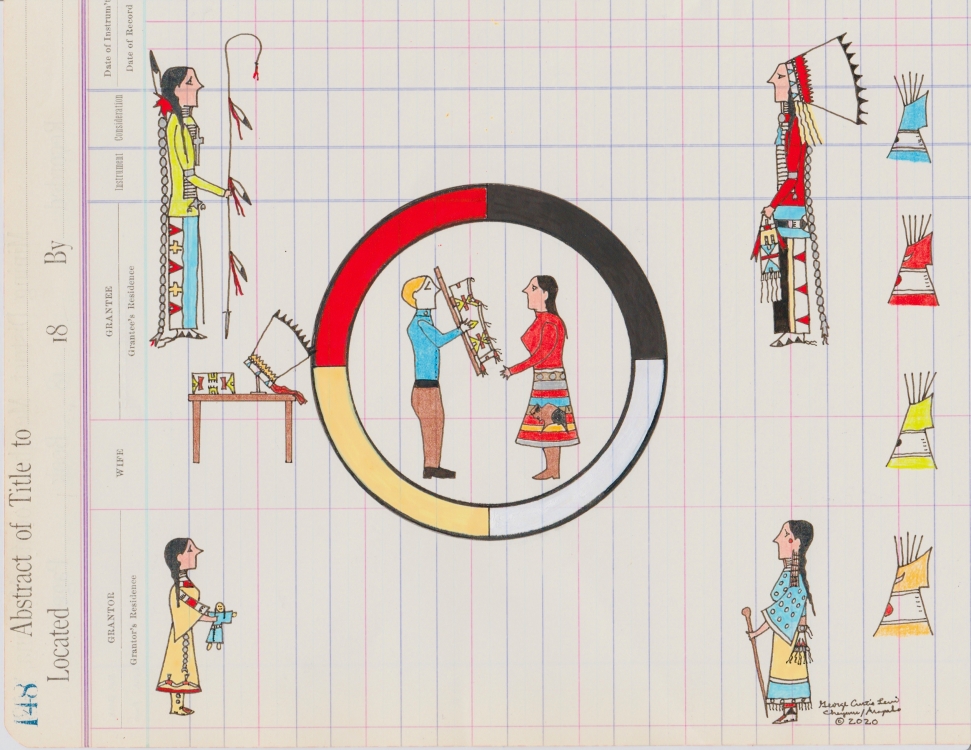
- Details
- By Andrew Kennard
WASHINGTON — The Department of the Interior announced on July 15 that it will begin consultations with tribal and Native Hawaiian community leaders about an overhaul of regulations that implement the Native American Graves Protection and Repatriation Act (NAGPRA). The draft regulations will reshape the processes by which federal agencies and museums return Native American human remains and cultural objects to descendents and Native communities.
“The repatriation of human remains and sacred cultural objects, and the protection of sacred sites is integral to preserving and commemorating Indigenous culture,” Principal Deputy Assistant Secretary of Indian Affairs Bryan Newland said in a department press release. “As the Department continues its work to confront the history of federal boarding schools – including returning the human remains of Native children to their families – we will implement the policies and requirements of NAGPRA to address tribal concerns.”
Want more Native News? Get the free daily newsletter today.
The Interior Department said the proposed new rules no longer require Native communities to initiate the repatriation process, and instead put the responsibility of completing the process on museums and federal agencies.
Under the drafted rules, museums and agencies would be required to consult with descendents and Native groups when they complete an inventory of human remains and the objects discovered with the remains, or “funerary objects.” Inventories would have to be completed two years after the new rules took effect, and a Notice of Inventory Completion would have to be published six months after that. The regulations also establish a timeline for repatriations to take place following the publication of the notice.
“Changes to NAGPRA regulations are long overdue,” Interior Secretary Deb Haaland said. “It is crucial that as we consider changes, we consult with Tribes and Native Hawaiian communities at each step. I’m hopeful this process will eliminate unnecessary burdens to the repatriation process and allow Indigenous peoples greater access to their ancestors’ remains and sacred items.”
The Interior Department also said the proposed changes “simplify and improve” regulations of the repatriation process and “rectify provisions that inhibit and effectively prevent the respectful repatriation of most Native American human remains and cultural items.” The new changes include many of the recommendations made by 73 representatives of 52 tribes during a 2011 NAGPRA consultation, according to a summary issued by the department.
‘The museums can’t hold back’
The inventory process requires museums and agencies to determine cultural affiliation, or which tribe or Native Hawaiian community the remains and funerary items belong to. The new deadlines will reduce museums and agencies’ ability to delay this determination, which must happen for repatriation to take place.
Tribes can also use another avenue called the disposition process to take possession of items that aren’t culturally affiliated. The disposition process doesn’t currently include funerary objects, but the proposed regulations would require museums and agencies to keep Native American remains and funerary objects together during disposition.
“So, many institutions have refused to make a declaration of cultural affiliation so that they can keep items,” said Shannon O’Loughlin, Chief Executive Officer and Attorney at the Association on American Indian Affairs (AAIA). “So, by changing this, and by changing the way disposition can happen, when items are supposedly unaffiliated… the museums can’t hold back.”
O’Loughlin (Choctaw) told Native News Online that this change will open up new possibilities for tribes that are not federally recognized to take possession of funerary objects. She explained that non-federally recognized tribes can’t use the repatriation process and therefore must use the disposition process instead. O’Loughlin also said that institutions often delay repatriation by asking tribes to provide more information before they determine cultural affiliation.
As of Sept. 30, the National NAGPRA Program reported that around two-thirds of the Native American remains that have been reported under NAGPRA since 1990 are not culturally affiliated. Around 84 percent of those remains have been reported in an inventory but have not been listed in a Notice of Inventory Completion, a process that includes determining cultural affiliation.
‘A comprehensive redo’
The Department of the Interior also said the draft regulations simplify, clarify, and correct complicated and inaccurate requirements. O’Loughlin called the changes a “comprehensive redo.”
“Prior to this, and even now, the regulations are extremely burdensome and complicated,” O’Loughlin said. “You’re constantly going back and forth between different provisions of the act to figure out how things are supposed to work. It’s not drafted to be a simplified process for museums, which are much different than federal agencies, or for tribes, to make sure that their rights are protected.”
O’Loughlin said that the AAIA will be working together with attorneys, friendly museum curators, tribal officials, spiritual practitioners, and others to craft recommendations for tribes before the Interior Department begins consulting with them about the proposed rules. Following consultation, the department said it plans to propose a notice of proposed rulemaking for public comment in October 2021.
“We’re also wanting to recommend to tribes where they may want to push if something hasn’t been taken care of, or where things have been revised and are good,” O’Loughlin said.
More Stories Like This
Native News Weekly (August 25, 2024): D.C. BriefsUS Presidents in Their Own Words Concerning American Indians
Native News Weekly (December 14, 2025): D.C. Briefs
Wounded Knee Massacre Site Protection Bill Passes Congress
Two Murdered on Colville Indian Reservation
Help us defend tribal sovereignty.
At Native News Online, our mission is rooted in telling the stories that strengthen sovereignty and uplift Indigenous voices — not just at year’s end, but every single day.
Because of your generosity last year, we were able to keep our reporters on the ground in tribal communities, at national gatherings and in the halls of Congress — covering the issues that matter most to Indian Country: sovereignty, culture, education, health and economic opportunity.
That support sustained us through a tough year in 2025. Now, as we look to the year ahead, we need your help right now to ensure warrior journalism remains strong — reporting that defends tribal sovereignty, amplifies Native truth, and holds power accountable.
 The stakes couldn't be higher. Your support keeps Native voices heard, Native stories told and Native sovereignty defended.
The stakes couldn't be higher. Your support keeps Native voices heard, Native stories told and Native sovereignty defended.
Stand with Warrior Journalism today.
Levi Rickert (Potawatomi), Editor & Publisher

